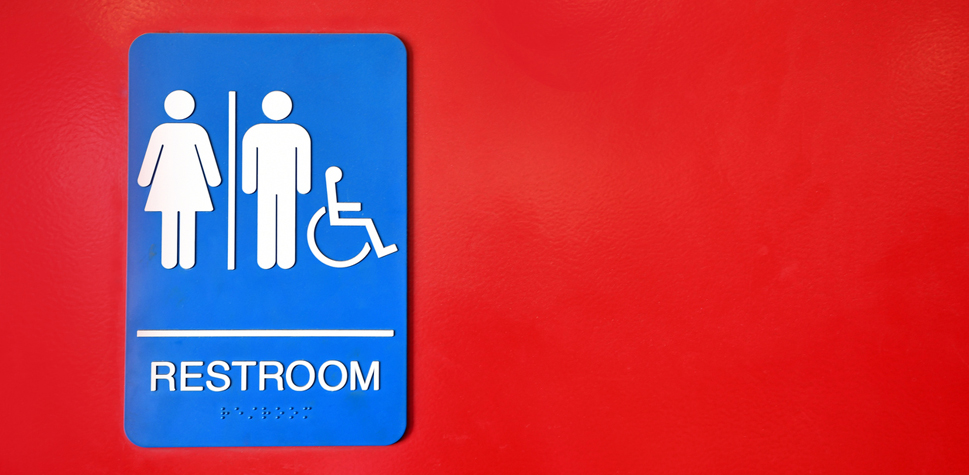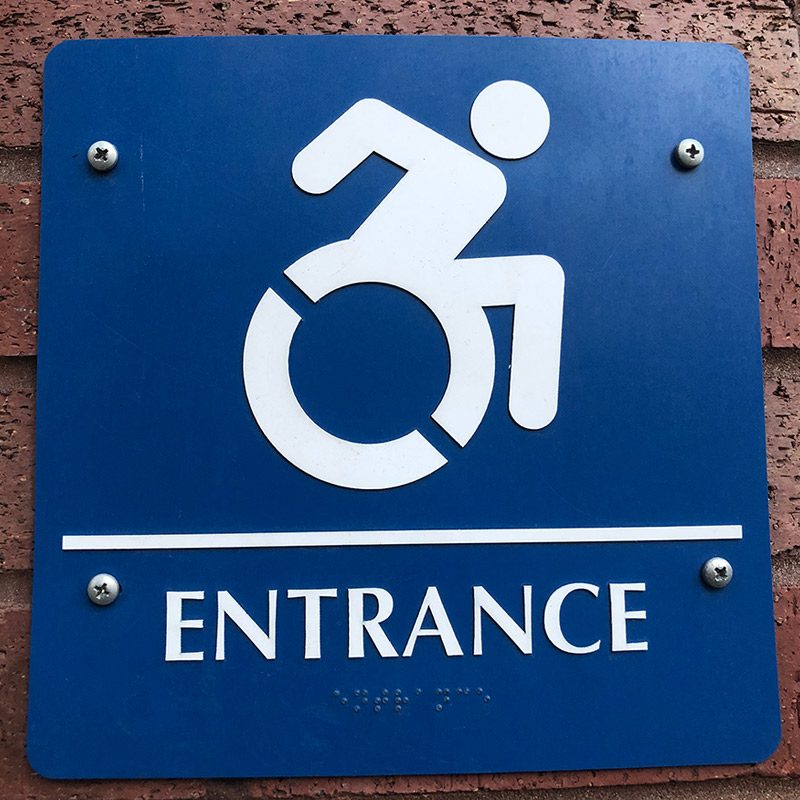A Comprehensive Overview to Choosing the Right ADA Signs
A Comprehensive Overview to Choosing the Right ADA Signs
Blog Article
Checking Out the Secret Attributes of ADA Indications for Enhanced Accessibility
In the realm of ease of access, ADA indicators work as silent yet effective allies, ensuring that rooms are navigable and comprehensive for people with impairments. By incorporating Braille and responsive components, these signs break barriers for the visually damaged, while high-contrast color design and understandable fonts cater to diverse aesthetic needs. Their critical positioning is not arbitrary but instead a computed effort to promote smooth navigation. Yet, beyond these features lies a much deeper story about the advancement of inclusivity and the recurring dedication to creating equitable spaces. What a lot more could these indicators signify in our pursuit of universal ease of access?
Relevance of ADA Conformity
Making sure compliance with the Americans with Disabilities Act (ADA) is critical for promoting inclusivity and equivalent gain access to in public spaces and work environments. The ADA, enacted in 1990, mandates that all public centers, employers, and transport services suit individuals with handicaps, guaranteeing they delight in the exact same legal rights and opportunities as others. Conformity with ADA standards not just satisfies legal obligations yet also improves an organization's online reputation by showing its dedication to diversity and inclusivity.
One of the key elements of ADA compliance is the implementation of obtainable signage. ADA indications are made to make sure that people with impairments can quickly browse with areas and structures. These indicators have to comply with details standards concerning size, typeface, shade comparison, and placement to assure exposure and readability for all. Correctly applied ADA signage aids eliminate obstacles that individuals with disabilities typically experience, consequently advertising their independence and self-confidence (ADA Signs).
In addition, sticking to ADA policies can reduce the risk of potential penalties and legal effects. Organizations that fall short to abide by ADA standards might face penalties or lawsuits, which can be both financially burdensome and destructive to their public image. Thus, ADA compliance is integral to promoting a fair environment for every person.
Braille and Tactile Components
The incorporation of Braille and responsive components into ADA signage symbolizes the principles of ease of access and inclusivity. These functions are crucial for people that are visually damaged or blind, allowing them to browse public spaces with higher self-reliance and confidence. Braille, a tactile writing system, is crucial in offering created details in a format that can be conveniently regarded through touch. It is normally put underneath the corresponding message on signs to make certain that people can access the info without visual assistance.
Responsive components expand past Braille and consist of increased characters and signs. These components are developed to be noticeable by touch, permitting individuals to determine space numbers, washrooms, departures, and other vital locations. The ADA sets details guidelines concerning the size, spacing, and positioning of these responsive elements to enhance readability and make certain uniformity throughout different environments.

High-Contrast Color Pattern
High-contrast color pattern play an essential duty in enhancing the presence and readability of ADA signs for individuals with aesthetic disabilities. These schemes are important as they maximize the difference in light reflectance in between text and history, making sure that indicators are easily noticeable, even from a distance. The Americans with Disabilities Act (ADA) mandates using certain shade contrasts to suit those with minimal vision, making it a crucial aspect of compliance.
The effectiveness of high-contrast shades depends on their capability to stick out in numerous illumination problems, consisting of dimly lit environments and locations with glow. Generally, dark text on a light history or light message on a dark background is utilized to achieve optimum contrast. Black text on a white or yellow background provides a stark aesthetic distinction that helps in quick recognition and comprehension.

Legible Fonts and Text Size
When taking into consideration the style of ADA signs, the option of readable fonts and appropriate message dimension can not be overstated. These components are vital for ensuring that signs come to individuals with aesthetic impairments. The Americans with Disabilities Act (ADA) mandates that font styles need to be sans-serif and not italic, oblique, script, very decorative, or of unusual form. These needs help make sure that the message is easily understandable from a distance which the characters are distinct to varied audiences.
According to ADA standards, the minimal text elevation must be 5/8 inch, and it should increase proportionally with seeing distance. Uniformity in message size adds to a cohesive aesthetic experience, assisting people in browsing atmospheres successfully.
Furthermore, spacing between letters and lines is essential to legibility. Appropriate spacing prevents personalities from appearing crowded, enhancing readability. By sticking to these criteria, designers can considerably boost ease of access, ensuring that signs serves its intended objective for all people, regardless of their visual capabilities.
Reliable Placement Techniques
Strategic positioning of ADA signage is essential for maximizing access and making sure conformity with legal standards. Appropriately located indications direct people with specials needs successfully, facilitating navigation in public rooms. Key considerations consist of height, visibility, and proximity. ADA standards state that indicators must be installed at a height between 48 to 60 inches from the ground to ensure they are within the line of sight for both standing and seated people. This conventional height variety is essential for inclusivity, allowing mobility device individuals and people of differing this content elevations to access info effortlessly.
In addition, signs have to be placed beside the latch side of doors to enable very easy identification before access. This positioning helps people situate rooms and spaces without obstruction. In cases where there is no door, signs must be positioned on the closest nearby wall. Consistency in sign positioning throughout a facility enhances predictability, reducing confusion and improving total individual experience.

Verdict
ADA signs play a crucial duty in advertising availability by integrating features that attend to the requirements of people with impairments. These aspects collectively foster a comprehensive atmosphere, highlighting the importance of ADA compliance in making certain equal access for all.
In the world of access, ADA indicators serve as silent yet powerful allies, guaranteeing that areas are navigable and comprehensive for individuals with impairments. The ADA, passed in 1990, mandates that all public centers, companies, and transportation services suit individuals with impairments, ensuring they delight in the exact same legal rights and possibilities as others. ADA Signs. ADA indications are created to make sure that people with impairments can conveniently browse via areas and buildings. ADA standards specify that indicators must be installed at a height in between 48 to 60 inches from the ground to ensure they are within the line of view for both standing and seated individuals.ADA indications play a crucial duty in advertising accessibility by integrating attributes that deal with the demands of people with specials needs
Report this page